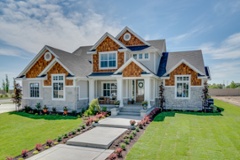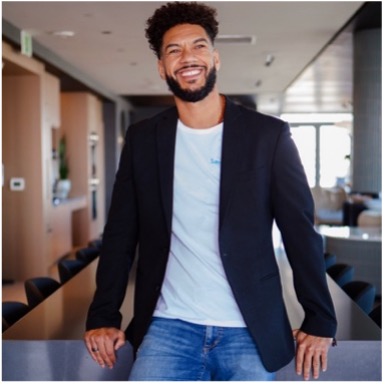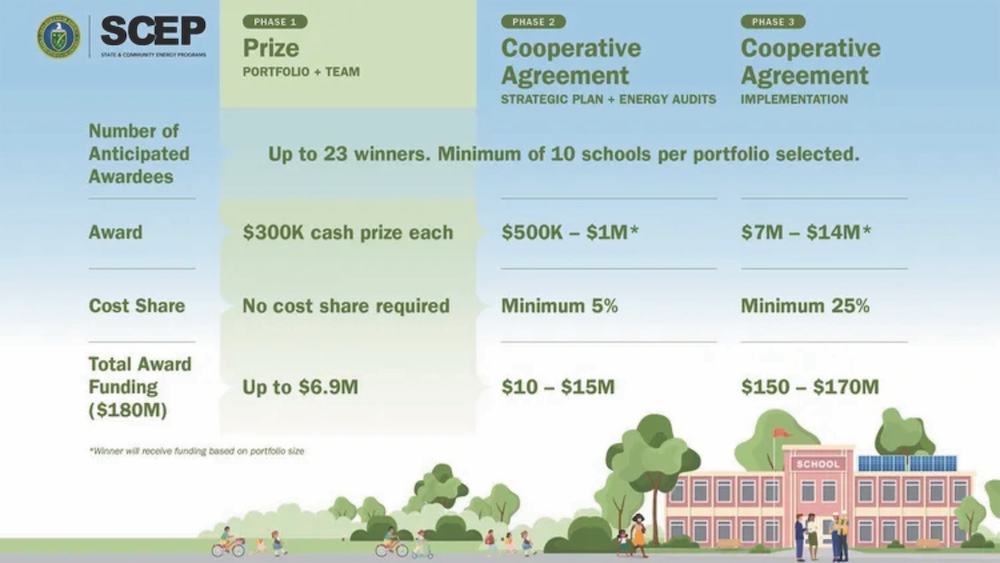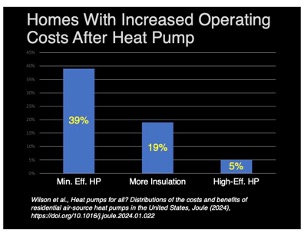Yesterday, the U.S. Department of Housing and Urban Development (HUD) and the U.S. Department of Agriculture (USDA) announced a final rule updating the energy code requirements for HUD and USDA new home mortgages. All new construction homes purchased with these federal mortgages must now comply with the 2021 or the 2024 International Energy Conservation Code (IECC). While the final rule was announced today, enforcement of the rule will not come for 18 months. Currently, the rules require compliance with the 2009 IECC. This new requirement will increase the energy efficiency of new homes by more than 30 percent.
Details »Insulation Institute Blog
With the cost of homeownership skyrocketing and extreme weather on the rise, it’s increasingly important to know if your home is financially and physically resilient.
Housing affordability is a nationwide concern for homeowners. Rising costs across insurance, taxes, and utilities are creating serious financial strain. These rising costs are alarming enough, but when combined with the increasing threat of severe weather events, like the recent snowstorm in Portland, Oregon, that left 132,000 people without power for over a week, risks are leading homeowners to question if they’re properly prepared.
Details »Shawn Nienhouse is a Certified Green Home Professional (CGHP) and Construction Project Manager for Habitat for Humanity of Kent County in Grand Rapids, MI. He oversees the construction of LEED-certified housing for families in need. His background also includes a stint as an estimator for a production builder that built close to code minimum homes. He’s spent significant time recently learning building science principles and high-performance, green construction details, and he shared his thoughts with us recently on why home builders must evolve from code-built to high-performance.
Details »The U.S. Department of Energy opened applications Wednesday for the 2024 Renew America’s Schools prize, which will award $180 million in funds to school districts nationwide to implement energy upgrades.
The prize, funded by the Biden Administration’s Infrastructure law, represents a significant opportunity for K-12 schools to improve infrastructure. Research has shown that improving school infrastructure through such activities as adding insulation reduces costs, improves student health, and contributes to better learning.
Details »The Inflation Reduction Act provides thousands of dollars in rebates or tax credits for homeowners installing heat pumps. However, even without those rebates, heat pumps would be cost-effective in 65 million U.S. households, according to the National Renewable Energy Laboratory (NREL) research. Further, electrification with heat pumps can reduce greenhouse gas emissions in every U.S. state. However, there is broad variability in the economics of heat pumps after installation, depending on several conditions. Envelope upgrades being one of them.
Details »Residential dehumidification has several benefits, including improved comfort, prevention of mold and mildew, and better respiratory health. Low humidity enabled by dehumidifiers also helps air feel cooler, allowing residents to set their thermostats at higher in the summer without sacrificing comfort. This can reduce the workload of the air conditioning system and save homeowners money.
Details »Driven by the passage of the Infrastructure Investment and Jobs Act and the Inflation Reduction Act (IRA), the clean energy transition saw a record-shattering year in 2023, according to the Business Council for Sustainable Energy (BCSE) and BloombergNEF in the Sustainable Energy in America Factbook, released Wednesday. The report focuses on clean energy technologies, including renewables, electric vehicles, power grid investments, energy efficiency, and other sectors, and details the more than $303.3 billion in financing deployed in the U.S. last year on clean energy investments.
Details »Would it surprise you to learn that 82 percent of companies are currently using or exploring artificial intelligence (AI) in their operations? Further, 84 percent report they are increasing their investments in data and AI.[1] That’s because AI has a near limitless capability to aid businesses and organizations in their effort to help boost energy efficiency, reduce carbon emissions, support clean energy technologies, and address climate change. Here are three specific ways AI is driving energy efficiency.
Details »State and local governments across the country are adopting Building Performance standards (BPS), and the pace of adoption for such standards will only accelerate as jurisdictions look to cut greenhouse gas emissions, boost building energy efficiency, and lower energy use. In 2023, 10 local jurisdictions across the U.S. launched BPS policies, including New Jersey, California, Colorado, Maryland, and Minnesota.
Details »Residential Energy Services Network (RESNET) has released data on the number of Home Energy Ratings Score (HERS)-rated homes in 2023. More than 360,000 homes were HERS rated last year, an increase of more than 22,000 homes compared to 2022. This accounts for 28 percent of all new homes built last year. The cumulative number of HERS-rated homes in the U.S. now tops 3.9 million, a stunning figure when you consider that just two years ago, the number of HERS homes reached 3 million.
Details »









